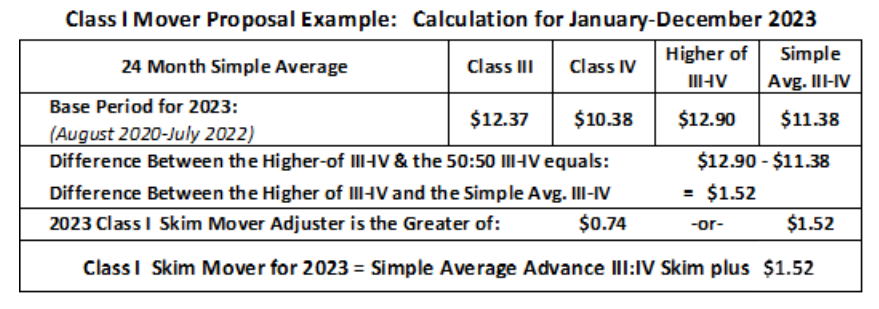The U.S. Department of Agriculture (USDA) oversees the Federal Milk Marketing Order (FMMO) program that establishes the minimum prices dairy farmers receive for their milk. The program, introduced during the 1930s, covers 11 areas of the country and applies to about 75% of total U.S. milk production.
The system identifies four classes of milk: Class I (fluid use), Class II (soft products such as ice cream and yogurt), Class III (cheese) and Class IV (butter and milk powder). USDA sets the prices based on the weekly average wholesale market price trends for cheese, dry whey, NFDM, and butter.
Dairy farmers receive a blend of these prices weighted by the percentage of the milk used in each class. At times, processors pay premiums above this minimum based on supply and demand in the current market.
IDFA is urging USDA to make the federal orders more flexible and dynamic to encourage greater investment and spur innovation. IDFA believes the next wave of reform efforts should be focused on three priority areas:
USDA in July 2023 announced it would hold a public hearing beginning Wednesday, August 23, 2023, to consider proposals seeking to amend the uniform pricing formulas applicable in all 11 FMMOs. Among the proposals under consideration are two proposals from IDFA that in combination represent a balanced approach that is based on sound data and is beneficial to both processors and dairy farmers.
IDFA’s Make Allowance proposal would update the system to better reflect the cost of processing milk into dairy products – something that hasn’t been adjusted since 2008. The IDFA proposal increases the current 2008 make allowance levels to the simple average of the 2022 Scheik study results and the new Stephenson 2022 survey stepwise over time. Half of the difference would be applied when (and if) the order changes are initiated, and 1/6 of the difference would be added each year over the next three years until the full amount is reached. If an audited mandatory cost survey conducted by USDA becomes available during this time, the make allowance numbers from the new survey would be used instead. IDFA, NMPF, AFBF and other stakeholders are all asking Congress to provide USDA with the statutory authority to conduct regular cost surveys, and IDFA members were in Washington, D.C., this summer urging Congress to include this authority in the upcoming Farm Bill.
In June, IDFA submitted a modification to the proposal at the request of USDA. The modification adds a $0.0015 adjustment to the Schiek and Stephenson studies for marketing fees, as is currently recognized by USDA. The chart below outlines the proposed make allowance changes.

IDFA’s Class I Mover proposal would provide dairy producers with milk check payments equal to or greater than what they would receive under the “Higher of” mover over time, while preserving the ability for producers, processors and their customers to hedge their costs. It would do so in a manner that:
In June, IDFA submitted a modification to the proposal at the request of USDA, further defining the proposed language and providing examples on how the proposal would work.
Under the IDFA proposal, the Class I skim milk mover for any given year would equal the Simple Average of the Class III & Class IV Advance Skim Milk Price, plus the higher of the following:
An example for 2023 follows below:

For more information, contact Dave Carlin, IDFA senior vice president of legislative affairs and economic policy, at dcarlin@idfa.org.

Senior Vice President of Legislative Affairs and Economic Policy